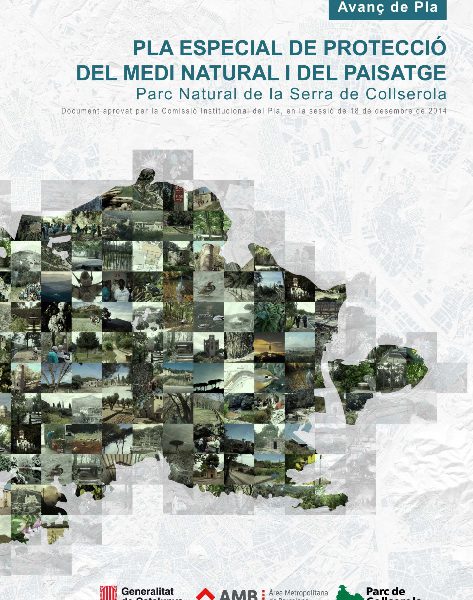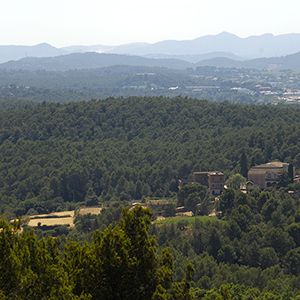On Tuesday, October 19, the government’s decision to declare the Serra de Collserola a Natural Park was made public.
Although the area had previously been protected by different legal instruments, Collserola has travelled a long path until its final declaration as a Natural Park.
Until now, the main instrument protecting Collserola was the Special Plan for the Organisation and Protection of the Natural Environmental of Collserola Park (PEPCo). PEPCo is an urban protection instrument that regulates the uses permitted within the Park limits according to the landscape and natural value of the area where such activities take place. The main objective behind the plan is to ensure that leisure activities are compatible with environmental protection and conservation in the Park. PEPCo, which is managed by the Collserola Park Consortium, also gives shape to the Natural Park, which covers an area of 8,460 hectares, of which 7,516 are forestland.
Since 1992, much of the area in Collserola Park has also been included in the Plan for Spaces of Natural Interest (PEIN). As a preventive measure under this plan, the area delimited by the plan is declared non-building land in accordance with legislation governing urban development.
Moreover, since 2006, the Serra de Collserola has formed part of the Natura 2000 Network, which was set up under the aegis of an EU Directive on the conservation of natural habitats and wild flora and fauna. This Directive seeks to establish a coherent European ecological system of special conservation areas, and Collserola Park forms part of this network as a coastal mountain space. Finally, Barcelona Metropolitan Territorial Plan (2010) includes the Serra de Collserola in the special protection category due to its natural and agricultural importance within the system of open spaces in the metropolitan area.
When preparatory work ready to declare the site as a Natural Park began in 2002 with the Study of Additional Protection Measures for the Serra de Collserola there were, then, two protective measures in place, both aimed at maximising conservation of the park’s natural heritage. The Catalan Parliament made provision for this study through Resolution 1347/VI of 24 April 2002, which was jointly drawn up by the Government of Catalonia’s Directorate-General for the Environment and the Autonomous University of Barcelona in cooperation with the Collserola Park Consortium. The purpose of the study was to propose additional protection measures in response to the major structural problems that affected Collserola Park. These measures were based on three broad strategies aimed at: 1) Protecting systems and guaranteeing natural functions in the Serra; 2) Regulating leisure amenities and new forms of use; and 3) Introducing environmental custodianship activities.
Finally, on 16 March 2009, a cooperation agreement was signed between the Government of Catalonia’s Environment Ministry and the Collserola Park Consortium, officially enshrining the Catalan Government’s intention to become a full member of the Consortium whilst also advancing towards the declaration of Collserola as a Natural Park.
What are the effects of the declaration as a Natural Park?
Apart from definitively establishing the limits around the protected area, the fact that Collserola has been given the status of Natural Park also entailed the entry of the Catalan Government to form part of the Collserola Park Consortium. This is a move that the local administration (Barcelona Provincial Council and the Barcelona Metropolitan Area Association of Municipalities) had been calling for constantly over the past 23 years. Besides the economic resources that this will release for the Natural Park, this also reinforces management of the site, since, according to the Statute of Autonomy of Catalonia, the Catalan Government is “the competent authority for the environment in the country, with powers not only over the management of nature reserves and protected habitats in Catalonia, but also over surveillance, control, protection, overall prevention and cooperation in relation to environmental management”.
Secondly, declaration as Natural Park also serves to strengthen the goal of conservation rather than centring only on urban protection. However, this does not mean that all urbanisation or town and country planning instruments that affect the Serra de Collserola, such as the Metropolitan General Plan (PGM), have been revoked. The zoning provisions established by the PGM and the application of PEPCo continue to be fully in effect.
Thirdly, and finally, other ways in which the declaration as a Natural Park strengthen the management of Collserola include: the provision of penal law protection against illegal actions and administrative offences; the declaration of public utility and preferential right of acquisition over all land in the Natural Park with regard to expropriation, including, but not exhaustively, planned works and activities; and the possibility of the Natural Park management body to issue a binding report before any compulsory licenses are awarded for any plans, works, earth moving or natural resource management operations, whether inside or outside the protected area, and which might affect the same.







